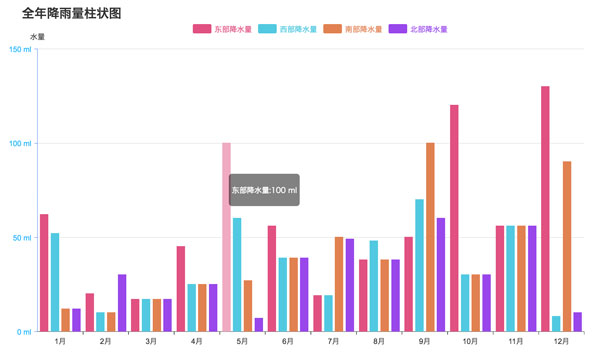html5组织内容_动力节点Java学院整理
时间:2017-08-15ul元素表示无序列表,用li元素表示列表项。
<body>
I like apples and oranges.
I also like:
<ul>
<li>bananas</li>
<li>mangoes</li>
<li>cherries</li>
<li>plums</li>
<li>peaches</li>
<li>grapes</li>
</ul>
You can see other fruits I like <a href="fruitlisthtml">here</a>
</body>
无序列表的每个项目前都会显示一个项目符号,符号的样式可以用CSS属性list-style-type控制。
li元素的属性
li元素表示列表中的项目,它可以与ul、ol搭配使用,可以包含value属性,表示列表项的序号。
<body>
I like apples and oranges.
I also like:
<ol>
<li>bananas</li>
<li value="4">mangoes</li>
<li>cherries</li>
<li value="7">plums</li>
<li>peaches</li>
<li>grapes</li>
</ol>
You can see other fruits I like <a href="fruitlisthtml">here</a>
</body>
描述列表
定义说明列表需要用到三个元素:dl、dt和dd元素,这些元素没有局部属性:
1)dl:表示说明列表;
2)dt:表示说明列表中的术语;
3)dd:表示说明列表中的定义。
<body>
I like apples and oranges.
I also like:
<dl>
<dt>Apple</dt>
<dd>The apple is the pomaceous fruit of the apple tree</dd>
<dd><i>Malus domestica</i></dd>
<dt>Banana</dt>
<dd>The banana is the parthenocarpic fruit of the banana tree</dd>
<dd><i>Musa acuminata</i></dd>
<dt>Cherry</dt>
<dd>The cherry is the stone fruit of the genus <i>Prunus</i></dd>
</dl>
You can see other fruits I like <a href="fruitlist.html">here</a>.
</body>
自定义列表
HTML中的ul元素结合CSS中的counter特性和:before选择器,可以生成复杂的列表。下面是一个例子:
<head>
......
<style>
body{
counter-reset: OuterItemCount 5 InnerItemCount;
}
#outerlist > li:before {
content: counter(OuterItemCount)". ";
counter-increment: OuterItemCount 2;
}
ulinnerlist > li:before {
content: counter(InnerItemCount, lower-alpha) ". ";
counter-increment: InnerItemCount;
}
</style>
</head>
<body>
I like apples and oranges.
I also like:
<ul id="outerlist" style="list-style-type: none">
<li>bananas</li>
<li>mangoes, including:</li>
<ul class="innerlist">
<li>Haden mangoes</li>
<li>Keitt mangoes</li>
<li>Kent mangoes</li>
</ul>
<li>cherries</li>
<li>plums, including:
<ul class="innerlist">
<li>Elephant Heart plums</li>
<li>Stanley plums</li>
<li>Seneca plums</li>
</ul>
</li>
<li>peaches</li>
<li>grapes</li>
</ul>
You can see other fruits I like <a href="fruitlist.html">here</a>.
</body>
使用插图
HTML5对插图的定义为:一个独立的内容单元,可带标题,通常作为一个整体被文档的主体引用,把它从文档主体中删除也不会影响文档的含义。
 有关HTML5页面在iPhoneX适配问题这篇文章主要介绍了有关HTML5页面在iPhoneX适配问题,需要的朋友可以参考下
有关HTML5页面在iPhoneX适配问题这篇文章主要介绍了有关HTML5页面在iPhoneX适配问题,需要的朋友可以参考下 html5中canvas图表实现柱状图的示例本篇文章主要介绍了html5中canvas图表实现柱状图的示例,本文使用canvas来实现一个图表,小编觉得挺不错的,现在分享给大家
html5中canvas图表实现柱状图的示例本篇文章主要介绍了html5中canvas图表实现柱状图的示例,本文使用canvas来实现一个图表,小编觉得挺不错的,现在分享给大家